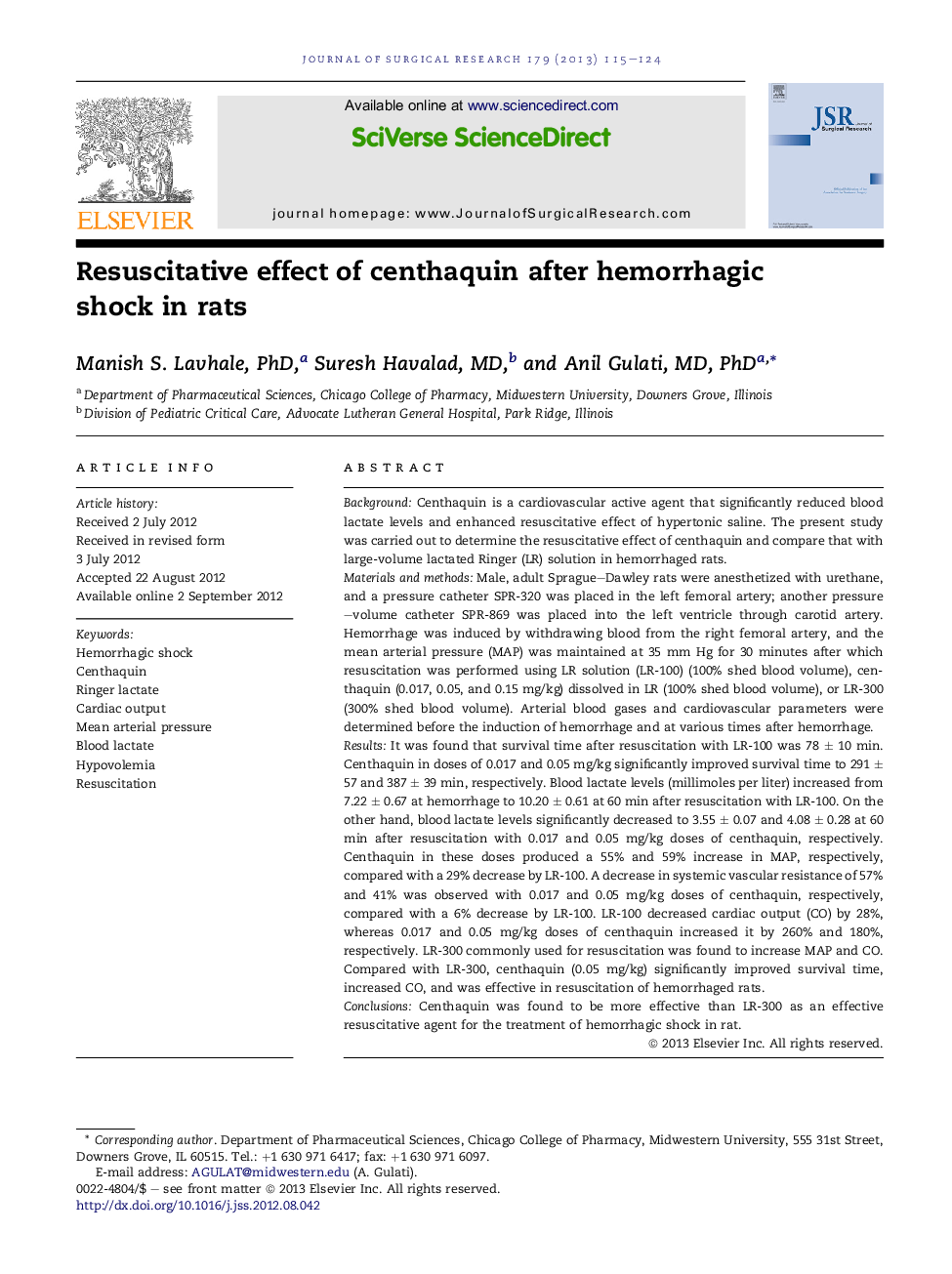| Article ID | Journal | Published Year | Pages | File Type |
|---|---|---|---|---|
| 4301128 | Journal of Surgical Research | 2013 | 10 Pages |
BackgroundCenthaquin is a cardiovascular active agent that significantly reduced blood lactate levels and enhanced resuscitative effect of hypertonic saline. The present study was carried out to determine the resuscitative effect of centhaquin and compare that with large-volume lactated Ringer (LR) solution in hemorrhaged rats.Materials and methodsMale, adult Sprague–Dawley rats were anesthetized with urethane, and a pressure catheter SPR-320 was placed in the left femoral artery; another pressure–volume catheter SPR-869 was placed into the left ventricle through carotid artery. Hemorrhage was induced by withdrawing blood from the right femoral artery, and the mean arterial pressure (MAP) was maintained at 35 mm Hg for 30 minutes after which resuscitation was performed using LR solution (LR-100) (100% shed blood volume), centhaquin (0.017, 0.05, and 0.15 mg/kg) dissolved in LR (100% shed blood volume), or LR-300 (300% shed blood volume). Arterial blood gases and cardiovascular parameters were determined before the induction of hemorrhage and at various times after hemorrhage.ResultsIt was found that survival time after resuscitation with LR-100 was 78 ± 10 min. Centhaquin in doses of 0.017 and 0.05 mg/kg significantly improved survival time to 291 ± 57 and 387 ± 39 min, respectively. Blood lactate levels (millimoles per liter) increased from 7.22 ± 0.67 at hemorrhage to 10.20 ± 0.61 at 60 min after resuscitation with LR-100. On the other hand, blood lactate levels significantly decreased to 3.55 ± 0.07 and 4.08 ± 0.28 at 60 min after resuscitation with 0.017 and 0.05 mg/kg doses of centhaquin, respectively. Centhaquin in these doses produced a 55% and 59% increase in MAP, respectively, compared with a 29% decrease by LR-100. A decrease in systemic vascular resistance of 57% and 41% was observed with 0.017 and 0.05 mg/kg doses of centhaquin, respectively, compared with a 6% decrease by LR-100. LR-100 decreased cardiac output (CO) by 28%, whereas 0.017 and 0.05 mg/kg doses of centhaquin increased it by 260% and 180%, respectively. LR-300 commonly used for resuscitation was found to increase MAP and CO. Compared with LR-300, centhaquin (0.05 mg/kg) significantly improved survival time, increased CO, and was effective in resuscitation of hemorrhaged rats.ConclusionsCenthaquin was found to be more effective than LR-300 as an effective resuscitative agent for the treatment of hemorrhagic shock in rat.
